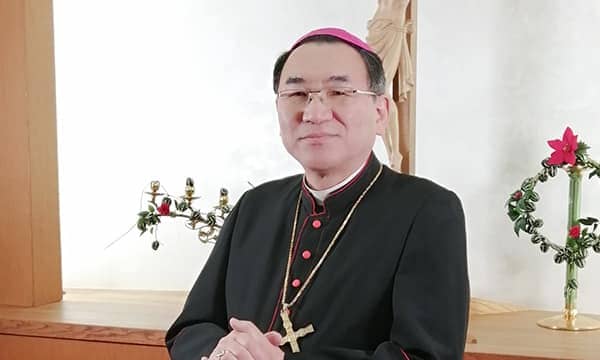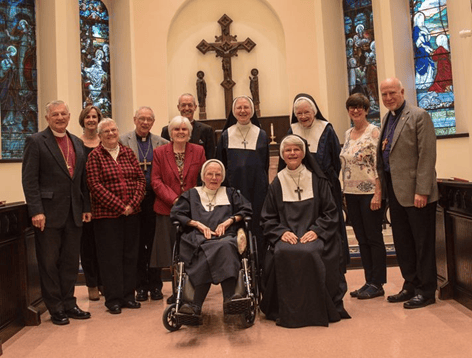ROME — Leaders generally find their calendars full of appointments, some of which fall into the category of “have to” rather than “want to.” Presidents host state dinners, CEOs attend shareholder meetings, principals go to parent/teacher nights, and to be honest, sometimes they’re just phoning it in.
The same point applies to popes, especially during the holiday season, which is always chock full of events. To grasp a pope’s real priorities, sometimes it’s useful to look at what he does, not because it’s traditional or expected, but out of personal choice.
If that’s the metric, then it seems clear what was foremost on Pope Francis’ mind over Christmas and New Year’s: The poor.
Of course, tradition more or less requires some focus on poverty at Christmastime. The faith holds that the savior of the world was born when a great empire was at its peak, but not in the capital city to a powerful family. Instead, Christ entered history in a marginal town of an occupied territory, to a family so poor he was delivered in a stable.
If that doesn’t beckon a reconsideration of how the world assesses value, it’s not clear what would.
Yet this year, Pope Francis bookended the holidays by finding two personal ways to bring the point home.
On Dec. 18, Francis headed across Rome to visit a hostel for the homeless run by Caritas, the main diocesan charity in Rome, to open a “Holy Door of Charity” as part of his special jubilee Year of Mercy. It was the first time that opening a “door of charity” had been made part of the jubilee ritual.
Celebrating Mass for a group of 200 people representing the various activities run by Caritas in Rome — homeless people, AIDS patients, mothers with developmentally challenged children, refugees, and so on — was, to hear Francis tell it, an expression of the heart of what the Year of Mercy is supposed to be all about.
On the other side of the holidays, Francis made an impromptu visit on Monday to Greccio, about an hour and a half north of Rome by car, to see a nativity scene designed by St. Francis of Assisi, whose romance with Lady Poverty is the stuff of legend.
(The outing was such a surprise that the pontiff had to cool his heels briefly outside the door of the shrine while startled Franciscan friars scrambled to put on their habits before opening up.)
In Italy, Greccio is a symbol of the way Francis inspired the poor to use the simplest means to create their own nativity sets, insisting that God cares not about glittering refinement, but about purity of heart.
Francis also popped in on a youth meeting that was underway in Greccio, extemporaneously telling the young people that the Christmas star, which in the Bible led the three wise men to Jesus, today should always lead Christians toward “the smallest, the most vulnerable, and the marginalized.”
Both the hostel visit and the outing to Greccio were novel and undoubtedly well-intentioned, but one might wonder if such gestures make any difference in the real world. Here’s just one anecdote to suggest that least sometimes, the answer is yes.
Almost 14 years ago, I found myself in Antigua, Guatemala, covering a visit by St. John Paul II to canonize a local hero named “Brother Pedro.” I and some colleagues went looking for a church named in his honor, but accidentally found ourselves at a small clinic also named for Brother Pedro and run by a group of Italian Franciscan missionaries.
The Rev. Giuseppe Contran invited us in, and nothing in my life had prepared me for what I saw.
As we walked down a hallway, I heard a deep groaning that sounded like a wounded animal. I assumed it was coming from outside, maybe an abandoned dog. Then we turned a corner, and walked into a ward full of children kept in beds with high bars on all sides. They looked like cages you might see at a dog pound, with the same sense of abandonment and desperation. (The idea, obviously, was to prevent the children from falling out or crawling away).
The children were twisted and deformed, some slightly, some in ways that can only be described as grotesque. A few were shaking violently, others moaning with a pain that was both cruel and constant. Cotan stroked the forehead of one child, calming him down and bringing a fleeting smile to his face.
Cotan explained most of these children had been abandoned — often, he said, dropped off anonymously at the front door of the clinic by parents who were simply overwhelmed.
Sometimes the children are born with their disabilities, he said, because of inadequate pre-natal care. Other times, Cotan said, they’re born healthy, but become deformed due to hunger and malnutrition. They are, in other words, the casualties of poverty.
The Franciscans and their local helpers devote every day of their lives to caring for these children, work that’s both physically and emotionally exhausting, and that quite honestly no one else would do. I asked Contran what kept them going, and he told me that knowing the pope has their back helps.
“This visit [to Guatemala] tells us the pope cares about what we’re doing, that it’s what the Church wants from us,” he said.
In a nutshell, that’s the message Francis apparently wanted to use his holidays to deliver, intending it for all the Church’s hostels, youth centers, clinics, and other works of charity and mercy out there, all still trying to follow the Christmas star toward the world’s forgotten people.

















